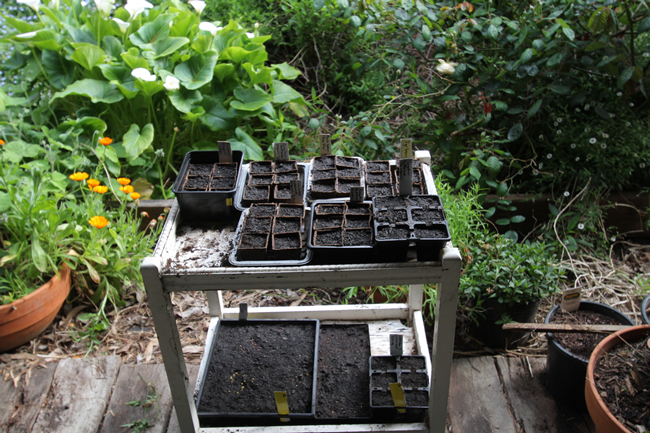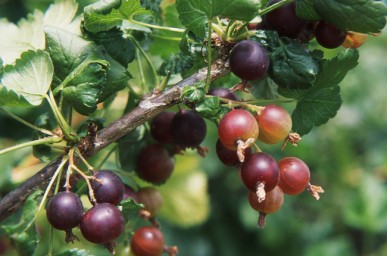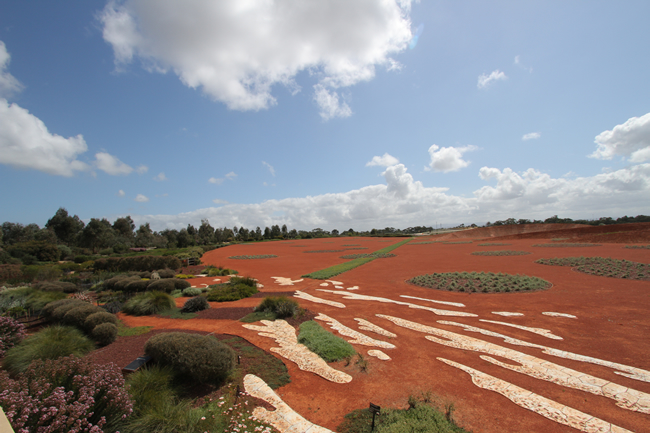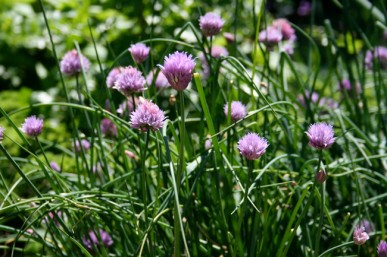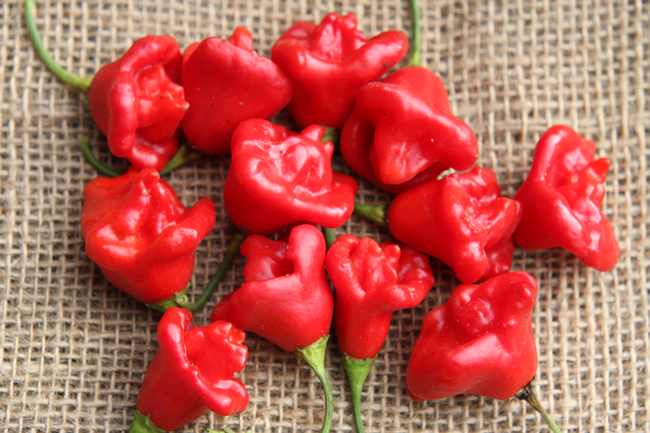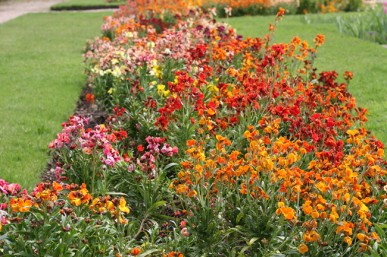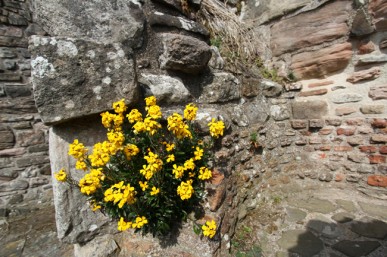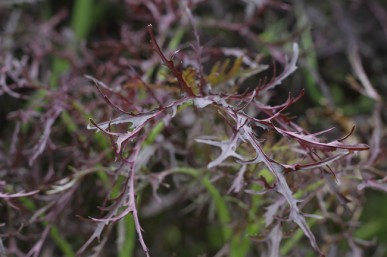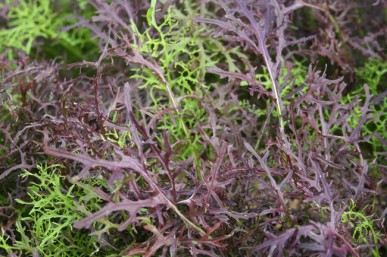I’ve had great fun over the last few weeks planting seed and watching them come up. I love the fact that more and more now it is possible to buy organic seed. This means that not only are my plants grown organically, but they are organic right from the beginning. I would urge everyone to support the seed suppliers who sell organic seed. There are many small suppliers and bigger suppliers who are now sourcing and selling Organic Seeds (see the list at the end of the article). Continue Reading
Jostaberries (Ribes nidigrolaria) – and pronounced ‘yustaberries’ – are a genetic cross between black currants (Ribes nigrum) and gooseberries (Ribes grossuaria).
This thornless plant which resembles black currant in growth, but with leaves similar, yet larger than the gooseberry was developed by Dr Rudolph Bauer at Max-Planck Institute in Cologne Germany around 1970.
Jostaberries are more vigorous than their parent plants and can be easily propagated from cuttings at the time of pruning or can also be layered, though they do not tend to sucker.
Jostaberries are self fertile, do best in colder areas and will not fruit in warm districts. Leaves are not susceptible to powdery mildew, fungal dieback, currant bud mite and white pine blister. Jostaberries prefer moist well drained soils in full sun, produce small clusters of flowers borne on at least one year-old branches, followed by green berries with underskin veining resembling its gooseberry parent. Continue Reading
Stage 2 launch
I was very lucky to get a sneak preview of the second stage of the Australian Garden at Cranbourne Botanic Gardens. Along with other members of the Horticultural Media Association we were taken on a guided tour of these unique and spectacular gardens. The 360 hectare Royal Botanic Gardens, Cranbourne were established in the 1970s and are dedicated to the conservation, display and enjoyment of Australian flora. Continue Reading
Common onion chives (Allium schoenoprasum) are probably one of the most under-appreciated and most taken for granted herbs we grow. Instead of sulking in a corner because of their treatment, in my garden, the chives are powering ahead growing into dense clumps ready to flower in a month or so.
Chives grow in clumps of small white bulbs which send up soft tubular green leaves to 40 cm and, from early summer onwards, rounded heads of pinkish-purple flowers on stiff hollow stems.
Grow chives by sowing seed or by dividing clumps in spring. Dig clumps and reset every two to three years to keep the clumps healthy. Chives like regular top dressings of compost and plenty of water in summer to maintain healthy leaf growth. They have particularly well this year because of the winter rain. When harvesting, always leave about 5 cm of leaf above the bulb. Chives make a good edging plant, especially for the vegetable garden; they also grow well in a pot. Continue Reading
Article and photos by Gail Thomas
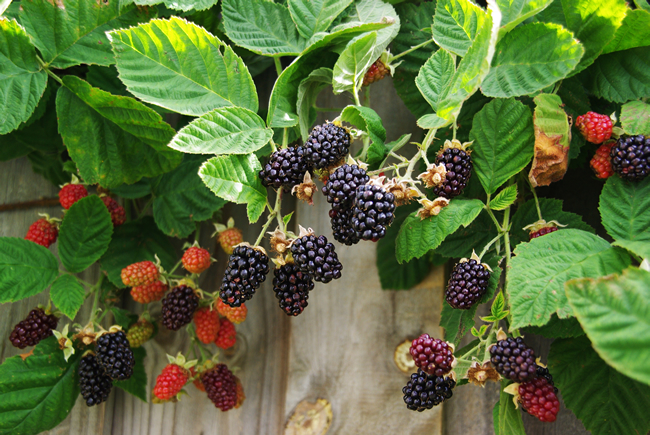 Marionberries are one of the most luscious summer fruits, and although the plants are thorny the resulting delicious fruit far outweighs any prickly encounters! A cross between the Chehalem and Olallieberry blackberries, this vigorous trailing cane blackberry cultivar is named after the county of Marion Oregon where they were developed in the 1950’s. Continue Reading
Marionberries are one of the most luscious summer fruits, and although the plants are thorny the resulting delicious fruit far outweighs any prickly encounters! A cross between the Chehalem and Olallieberry blackberries, this vigorous trailing cane blackberry cultivar is named after the county of Marion Oregon where they were developed in the 1950’s. Continue Reading
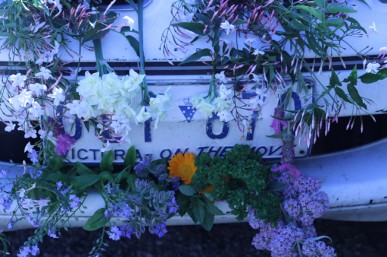 Like so many gardeners in this beautiful state I think we should be on the move to again declare ourselves The Garden State. It is time we repossessed the logo and put it back on our number plates. As Glenn Fenton, President of Nursery & Garden Industry Victoria says “Victoria is home to some of the most beautiful and historic gardens in the country, and there is no better time of year than Spring to remind us how important those gardens are to the character and identity of our State”. In his article in the Sunday Age yesterday, award winning landscape gardener Jim Fogarty reminded us that “Greening cities is now a significant driver of investment” and that “Greening cities brings significant benefits to our physical and metal health”. When you add to this the plethora of gardens, including more than 100 community gardens, 32 botanic gardens, important avenues of street trees and the tens of thousands of back yards and balconies where families grow their own food then it would be hard to find a better brand for our state. If you want to support this move then go to this facebook page
Like so many gardeners in this beautiful state I think we should be on the move to again declare ourselves The Garden State. It is time we repossessed the logo and put it back on our number plates. As Glenn Fenton, President of Nursery & Garden Industry Victoria says “Victoria is home to some of the most beautiful and historic gardens in the country, and there is no better time of year than Spring to remind us how important those gardens are to the character and identity of our State”. In his article in the Sunday Age yesterday, award winning landscape gardener Jim Fogarty reminded us that “Greening cities is now a significant driver of investment” and that “Greening cities brings significant benefits to our physical and metal health”. When you add to this the plethora of gardens, including more than 100 community gardens, 32 botanic gardens, important avenues of street trees and the tens of thousands of back yards and balconies where families grow their own food then it would be hard to find a better brand for our state. If you want to support this move then go to this facebook page
to register. And don’t forget to spread the word to your friends.
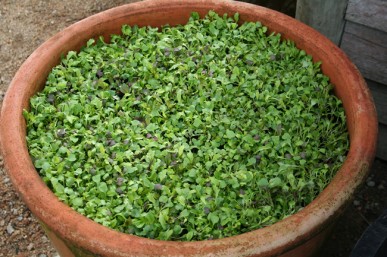 According to recent research (see below) and reported on Science Daily microgreens are higher in a range of nutrients than their more adult forms. My favourite microgreens are young leafy salad plants like lettuce, spinach, mizuna, and rocket, but red cabbage, bok choy, kale and mustard are also delicious. Throw in a few garlic chive or onion seeds to add piquancy, as well basil or dill and you will have a truly multicultural mix. Microgreens are sown into soil (I use potting mix) in seed trays or pots. Keep them just moist in a sunny position and two to three weeks later they are ready to harvest. Just cut them with scissors, add to salad, use as a garnish or sprinkle over a sandwich. Not only do they taste great but research has shown that healthy vitamins and carotenoids are found in larger amounts than their mature counterparts. For example, red cabbage microgreens are high in vitamin C, while green daikon radish microgreens were rich in vitamin E. Anyone with a sunny windowsill can grow microgreens, so why not buy some seed (both Diggers and Green Harvest sell seed), alternatively it is a great way to use up your old packets of herb and vegetable seed.
According to recent research (see below) and reported on Science Daily microgreens are higher in a range of nutrients than their more adult forms. My favourite microgreens are young leafy salad plants like lettuce, spinach, mizuna, and rocket, but red cabbage, bok choy, kale and mustard are also delicious. Throw in a few garlic chive or onion seeds to add piquancy, as well basil or dill and you will have a truly multicultural mix. Microgreens are sown into soil (I use potting mix) in seed trays or pots. Keep them just moist in a sunny position and two to three weeks later they are ready to harvest. Just cut them with scissors, add to salad, use as a garnish or sprinkle over a sandwich. Not only do they taste great but research has shown that healthy vitamins and carotenoids are found in larger amounts than their mature counterparts. For example, red cabbage microgreens are high in vitamin C, while green daikon radish microgreens were rich in vitamin E. Anyone with a sunny windowsill can grow microgreens, so why not buy some seed (both Diggers and Green Harvest sell seed), alternatively it is a great way to use up your old packets of herb and vegetable seed.
(Zhenlei Xiao, Gene E. Lester, Yaguang Luo, Qin Wang. Assessment of Vitamin and Carotenoid Concentrations of Emerging Food Products: Edible Microgreens. Journal of Agricultural and Food Chemistry, 2012; 60 (31): 7644 DOI: 10.1021/jf300459b)
Article by Gail Thomas
Bishops Crown or Christmas bell chillies (Capsicum baccatum) produce masses of decorative red fruit making an eye-catching garden display resembling a Christmas tree of baubles, as well as being a tasty treat in the kitchen. While some chillies can be deceivingly hot, these little beauties are more on the mild side making them extremely versatile for an array of culinary applications. Continue Reading
The original wallflower (Erysimum cheiri) is a perennial that is often found growing wild in Europe on cliff faces and in the stone walls of old buildings. The flowers are sweetly scented and range from golden yellow to orange. Country people would pick the flowers and carry them as posies to festivals and gatherings.
My favourite edible plant in the garden at present is red mustard (Brassica rapa ’Ruby Streak’) also known as mustard ruby streaks. This finely divided salad leaf can grow as tall as 60cm but is usually a bit smaller. The leaves have a sharp lemony flavour with a hot peppery after taste. I graze on it fresh from the garden, add handfuls to salads, chop it and combine with cream cheese on biscuits, or put it into sandwiches. Older leaves are great in stirfries if added at the last minute. The more leaves you harvest the more they will grow. Lime streaks mustard has green leaves and a similar flavour, but I think the red leafed form has the edge. Continue Reading

